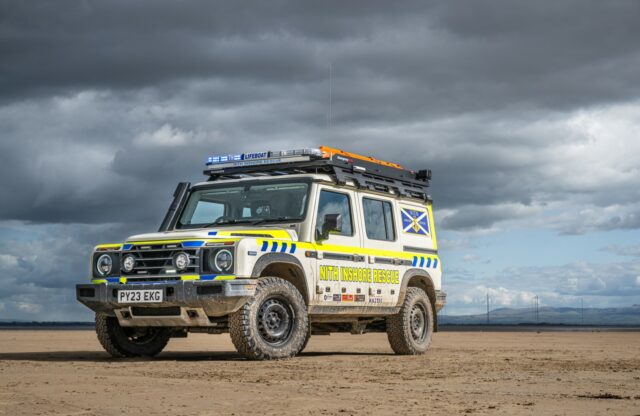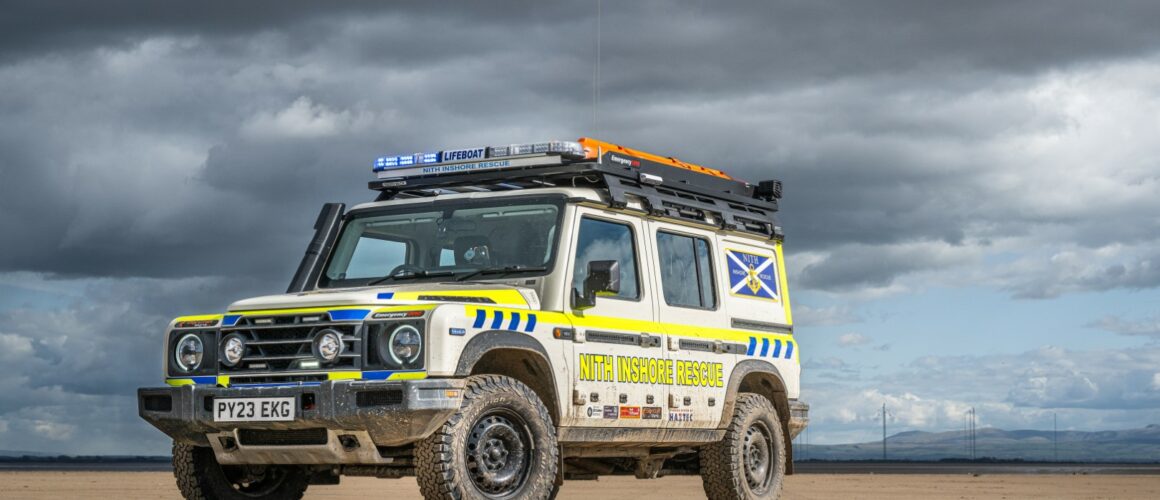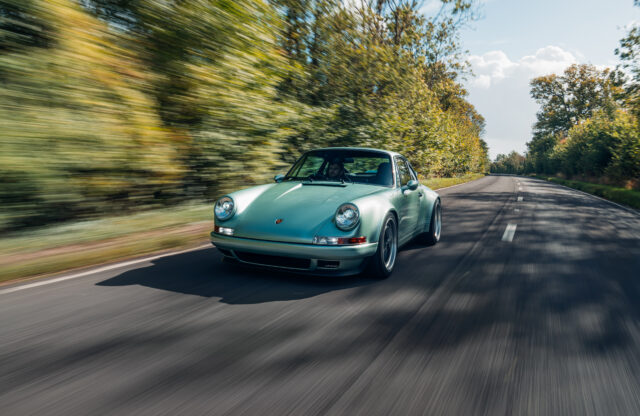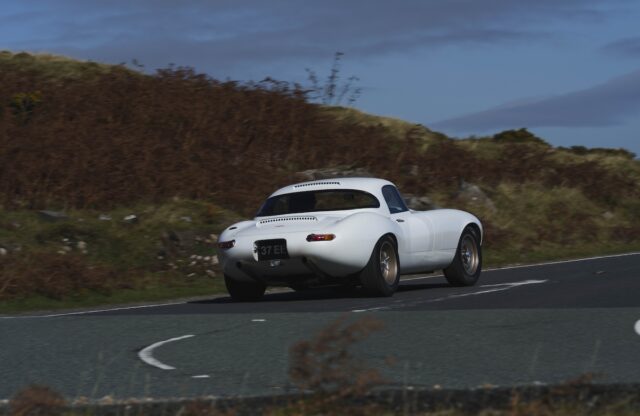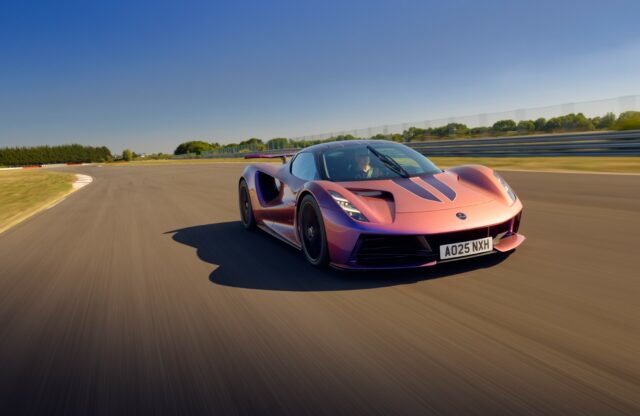Erin Cooper is a woman you might hope never to meet. That is, when she’s on duty. An accident and emergency doctor, lifeguard, medic and member of Nith Inshore Rescue, which provides a 24-hour search-and-rescue service in southwest Scotland, she mostly makes her acquaintance with people during the darkest, most traumatic hours of their life. “I wanted to be the person who could help,” she says – the person who would be there before it was too late.
Our meeting is the result of careful planning, rather than crisis, and my curiosity to encounter the UK’s first blue-light INEOS Grenadier – without getting myself into a pickle. In active service with Nith Inshore Rescue, it is a bespoke-customisation “Swiss Army knife on wheels”, according to advanced helm and secretary Peter Bryden, 44, and I want to know how and why. But at the moment, I’m content with taking a seat on the 4×4 utility wagon’s bonnet to talk.
Erin sets a harrowing scene: “A child had been blown offshore in an inflatable. I’d never felt adrenalin like it when we got that call.” It was a day out that had taken a horrible turn, but thanks to Nith Inshore Rescue, tragedy was not its destined conclusion. The young casualty was located in time. Erin then momentarily lightens the mood: “My first call-out was to help a cow; it wasn’t exactly what I’d expected.”
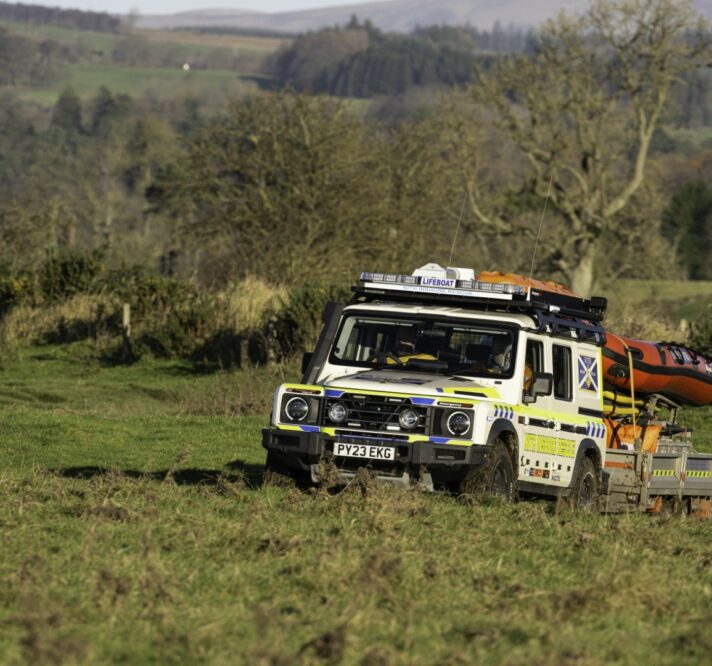
Nith Inshore Rescue’s operational area covers the expanse of Dumfries and Galloway, as well as the Solway Firth, one of UK’s most treacherous stretches of coastline
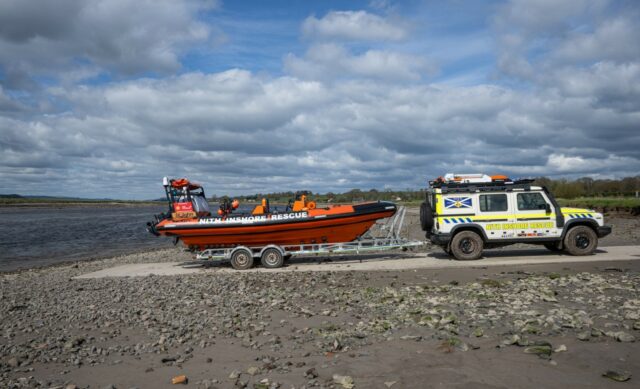
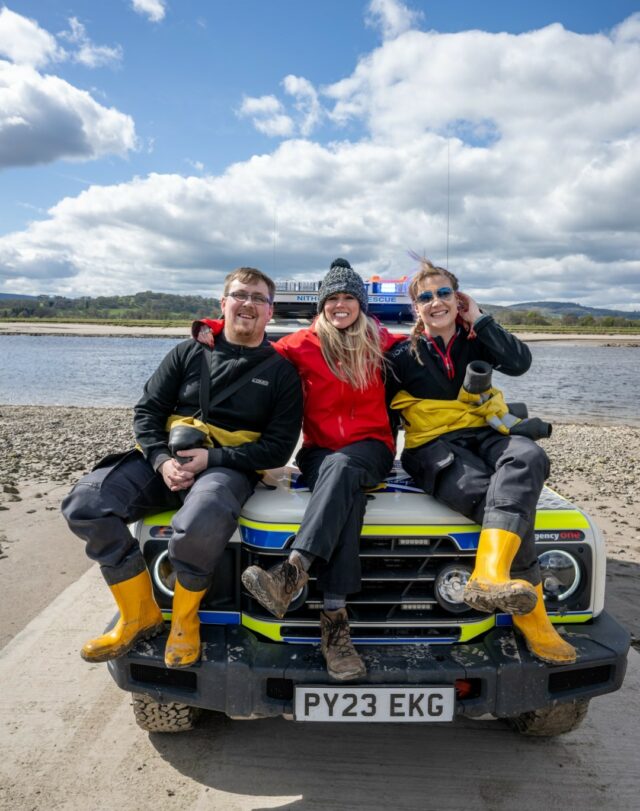
Stationed in Glencaple, on the banks of the River Nith – which has a tempestuous habit of flooding – Nith Inshore Rescue’s operational area covers the expanse of Dumfries and Galloway, as well as the Solway Firth, one of UK’s most treacherous stretches of coastline. A charitable organisation, it was established in 1981 and comprises 23 crew.
“You don’t have as much control out here as you do in an A&E department,” says Erin, 26, who joined in 2021. Mudflats, quicksand and some of the fastest tidal movements in Europe create inherently dangerous, and changeable, conditions. Specialist training and fit-for-purpose equipment is paramount to the effectiveness of their response, but there are no textbook scenarios: something can always go wrong.
“If we are out there to save someone because they’ve got into trouble, the last thing we want is for one of our bits of kit to fail – because then we’re in trouble, which makes us a casualty as well,” explains advanced senior helm Stuart Forsyth, 28, an electrician by trade, who has joined us on the bonnet of the Grenadier. “I have total trust in this machine,” he professes. “For us, it’s the power, reliability and capability that make it a great piece of kit.” Beneath us lies a turbocharged BMW B57 3.0-litre inline-six. A punchy and proven powerplant that’s been tweaked to deliver peak torque at low revs, it’s paired with an eight-speed automatic gearbox.
Recruited to launch lifeboats, provide shoreline search-and-rescue support, and function as Nith Inshore Rescue’s mobile HQ, the Grenadier, which has 10.4 inches of ground clearance and a wading depth of up to 800mm, is crucial to every call-out. It’s a distinctive, industrious ambassador, too.
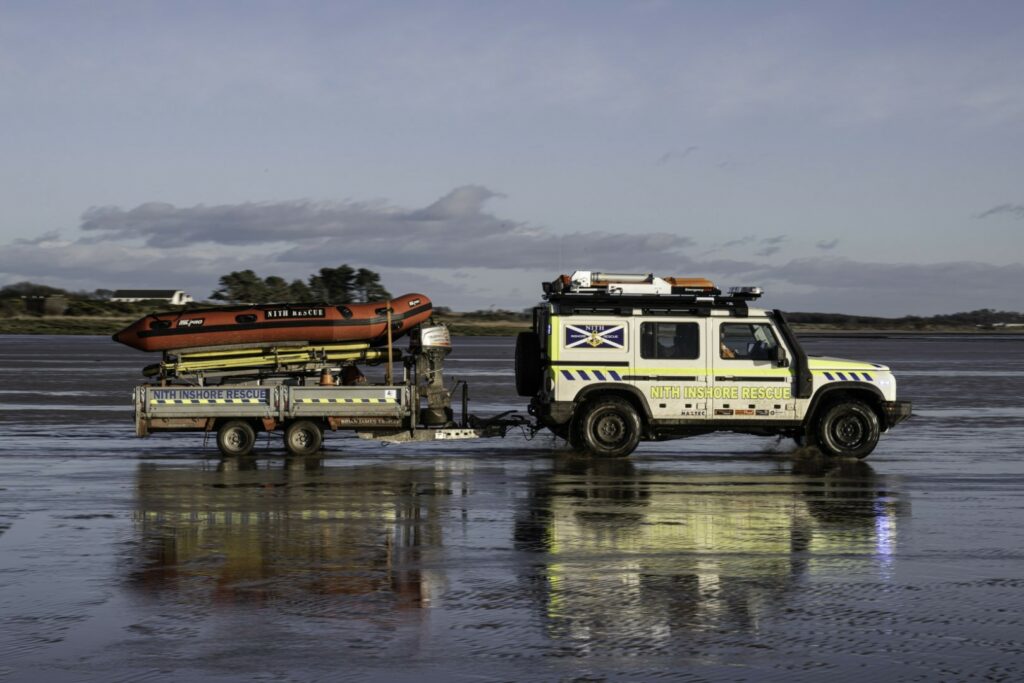
Fortuitously, my visit coincides with the Nith in a bonny mood. Winding through the vale beneath a partly cloudy blue sky, it’s a sight that’s quite lovely to behold – but I’m keen to see the Grenadier in a more challenging context. Peter, a business and quality manager in the NHS, is anxious to oblige. “It’s been quite a big development, us getting the Grenadier,” he says, with a telling twinkle in his eye. Clearly, this hardy life-saver is smitten.
The Grenadier’s door closes with a satisfying clunk. Inside, the instrumentation is reassuringly analogue; less faff, more efficient. The overhead control panel integrates switchgear such as off-road, wading, downhill assist, plus front and rear differential lock, as well as a 3D-printed console – the only one of its kind in the world – which houses buttons that engage the vehicle’s 360° auxiliary lights and winch.
“Aye!” Peter acknowledges my immediate fixation with a button that reads ‘999’. It’s glowing, electric blue and I’m itching to give it a push. “The sirens will go live if I press the vehicle horn,” he teases, forbidding me to do either. I’m given a masterclass in the Grenadier’s audible-warning system instead. “You start with the ‘whale’ tone,” Peter says. “That’s the long one…”
I interrupt him with my best impression of a cetacean in full comms. “…To tell people you are approaching,” Peter patiently perseveres. “The ‘yelp’ tone is faster, it sounds more urgent and it really brings people’s attention to the fact that we’re there.” I spare Peter’s ear drums. “We have another tone, it’s the really fast one. It basically tells folk: I’m coming through, get out of the way.”
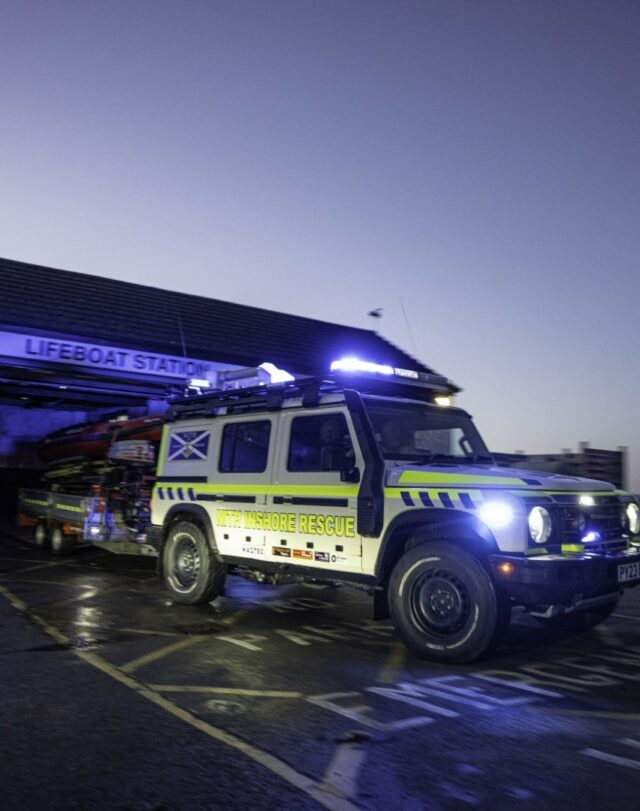
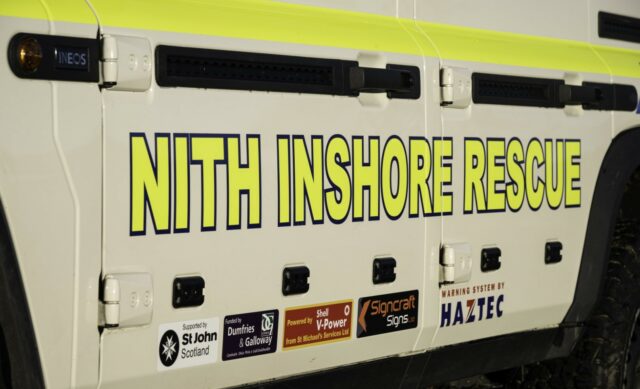
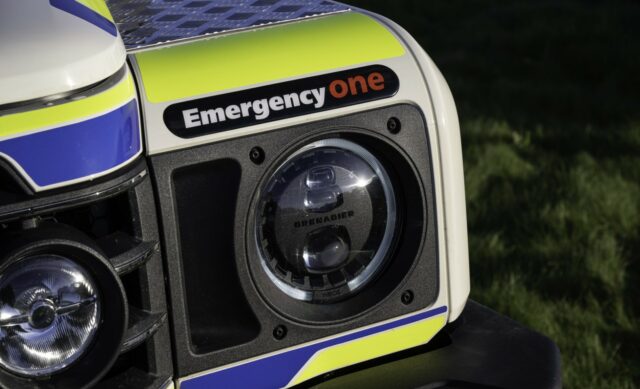
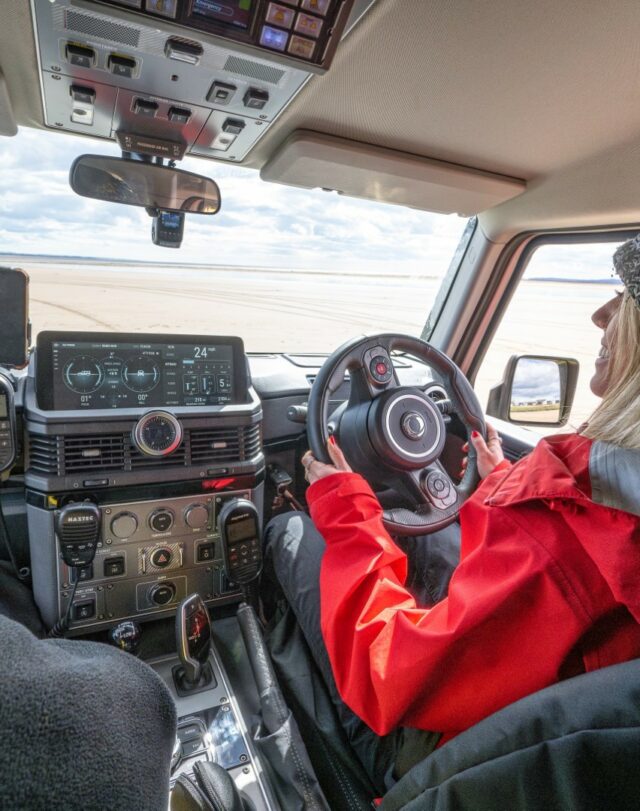
Riding shotgun is Gwilym Gibbons. Tall, affable and unflappable, he was a new recruit back in 2018. As advanced helm and treasurer, he’s in charge of the lifeboat and crew during a shout, as well as Nith Inshore Rescue’s wallet. A volunteer organisation that runs independently from the RNLI, Nith is required to raise its annual £40,000 operating budget itself, and with an out-of-the-box starting price of £65,000, the Grenadier was a hefty investment.
“We wouldn’t have been able to afford it without support,” says Gwilym, 53, a chief executive by day. Financial backing came in the form of grants, as well as significant donations from St John Scotland and the local community. The sale of the Grenadier’s predecessor, a much-loved but ailing 54-plate Land Rover Defender, topped up the piggy bank with £22,000.
“It was becoming too unreliable. When we get a call, we get on the road as quickly as possible,” explains Peter, who joined Nith Inshore Rescue in 2008. “Normally, that’s within 10 minutes of being paged, with the crew fully dressed in their all-in-one dry suits and steel-plated wellies.” Gwilym is keen to add to the conversation about the Defender’s farewell: “I think Pete was in tears.”
He isn’t taking the mick. “I genuinely had to walk around the back of the station when it was driving away, because it was a bit emotional seeing it go,” Peter discloses. “I can remember some fairly sombre moments in that vehicle, some really positive and funny ones, too, and the times I repeatedly got stuck in bogs.”
With a body-on-frame ladder chassis, heavy-duty beam axles and shocks, as well as under-ride protection including skid plates and shielding for the fuel tank, the Grenadier is built like a brick, ahem, outhouse. The flat front wings are ideal for resting kit, and vehicle-safety provisions make it a vast improvement over the Defender. I can see why Peter’s loyalty has been swayed.
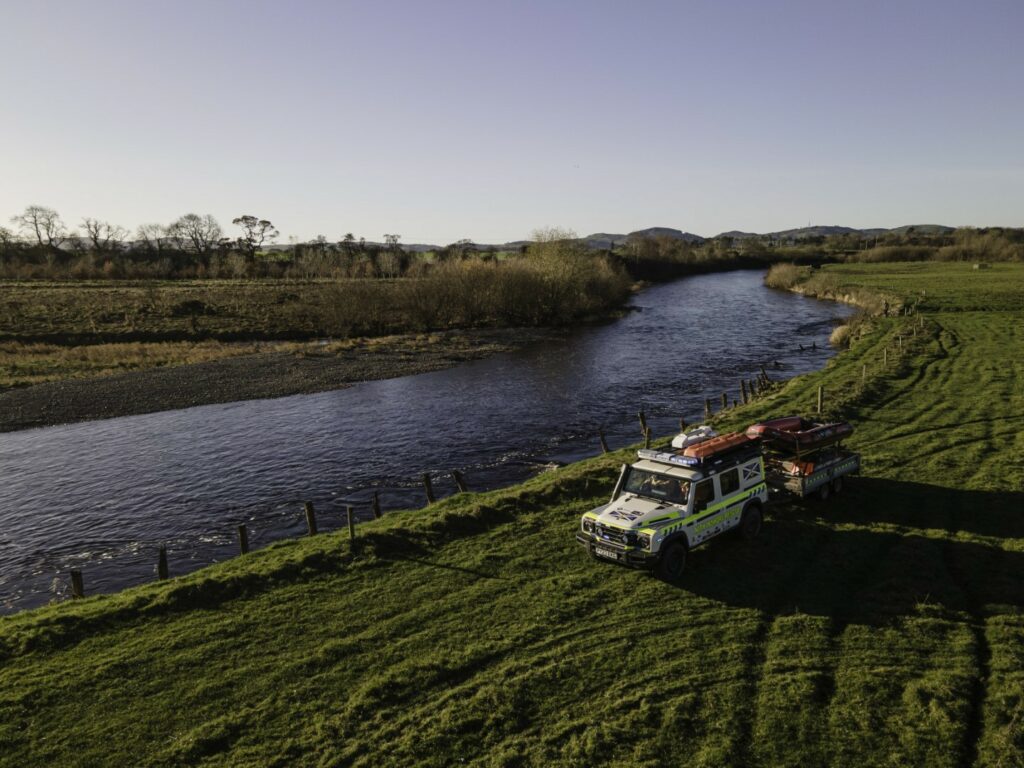
The Grenadier, which is available only in four-wheel drive, purrs as we traverse an unpaved landscape; a heavy-duty torque converter enhances the transmission’s ability to adapt to the terrain. “We will go wherever we are deployed by HM Coastguard,” says Peter. “We’ll make decisions on where to launch and rendezvous based on the information we have at the time – which can be limited.” The skill in blue-light driving, he reveals, has little to do with high speed, and a lot to do with calculating risk.
“Contrary to what people might think, driving to a treble-nine call is not a lot of fun,” he explains. “It’s very dynamic, you are constantly risk assessing and there’s a lot of shared responsibility; five sets of eyes are better than the one set in the driver’s seat.”
En route, the Grenadier’s cabin serves as an operations room. Specialist communication equipment includes a VHF (very high frequency) marine radio, and seats are allocated to specific roles. Team leader occupies the front passenger position. “We talk through the scenario and how we are going to respond, but it’s not just the person in charge who’s always got the best idea – we use our collective knowledge.” On some shouts, Nith Inshore Rescue participates in a multi-agency response with partners including HM Coastguard, the Scottish Fire and Rescue Service as well as Moffat and Galloway Mountain Rescue.
The nature and frequency of incidents is unpredictable. “No themes, no trends, no quiet patch,” says Pete. Quiet. A word he instantly regrets. “I once had six call-outs over the course of seven days.” The crew’s personal sacrifices can be significant. If the pager sounds, “it’s usually when you’ve just got off to sleep”. According to Gwilym, they answer the call. Weddings, soirees and celebrations… nothing, not even the Grenadier’s unveiling ceremony, is safe from being cut short. “I think a lot of folk thought it was staged, but it was a genuine call to help search for a missing person.”
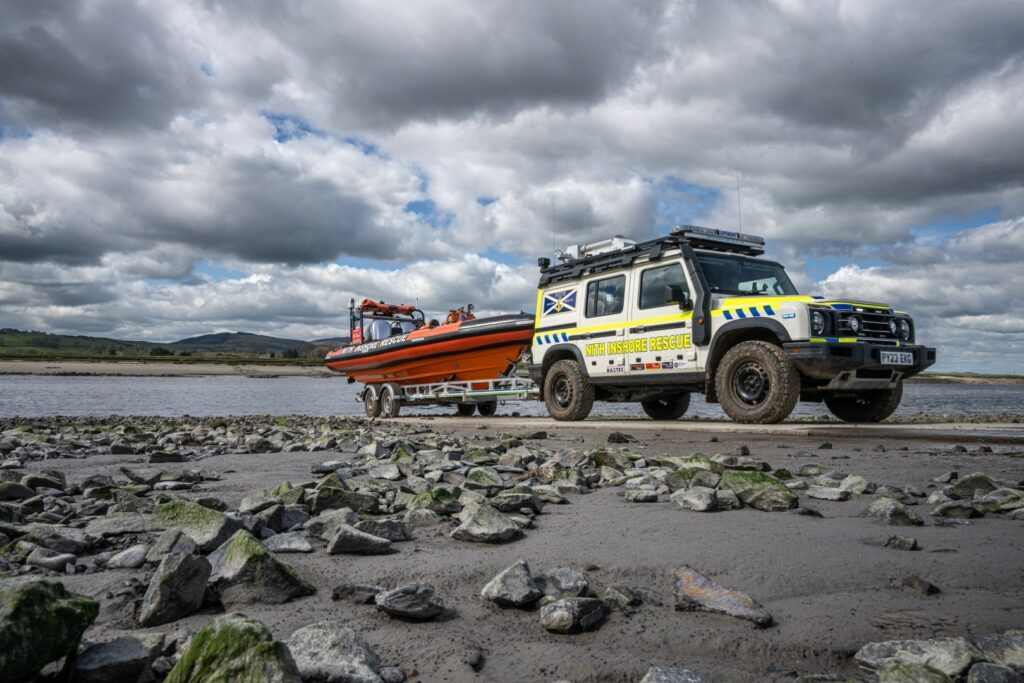
Attending an average of 25 incidents a year, Nith Inshore Rescue is one of Scotland’s busiest stations. Recovering stranded vessels, extracting people who have become stuck in mud, and assisting a police Major Investigation Team on a suspected murder enquiry – all are part of its remit. Whitesands, one of the most regularly flooded urban areas in the country, is also on its patch.
To get to a scene, rendezvous or launch site, the Grenadier is often required to tow a lifeboat, on a twin-axle trailer, off the beaten track. “We have no boundary,” says Peter, confidently. It can become a safe space to share confidences, too. “On the way back from an incident, when it’s fresh, it can be good to start that debrief process,” he continues. “How did it go? How is everybody feeling? And then there are times when it’s just not the right time to talk.” Even when the outcome isn’t what you’d hoped for, and worked for, “there’s a sense of relief” in knowing that you did everything you could, says Stuart.
Dark nights, all weathers and all seasons, the crew at Nith Inshore Rescue puts in a minimum 260 hours of training per year. Professional off-roading instructor Hugh Roberts, of Far by Four, provides specialist tutorage for the team. “This is a more capable vehicle than the Defender,” he says, “so it’s important to understand its functions and abilities in order to get the best out of it – and how to drive it sympathetically. If the Grenadier gets stuck, it’s not the vehicle’s fault, it’s the driver’s.”
Gwilym adds: “When you know how to handle a vehicle, and how it is going to behave, that’s when it becomes part of the team.” The Grenadier, at present, remains nameless, but the roof-mounted camera and light mast is known affectionately as Johnny 5.
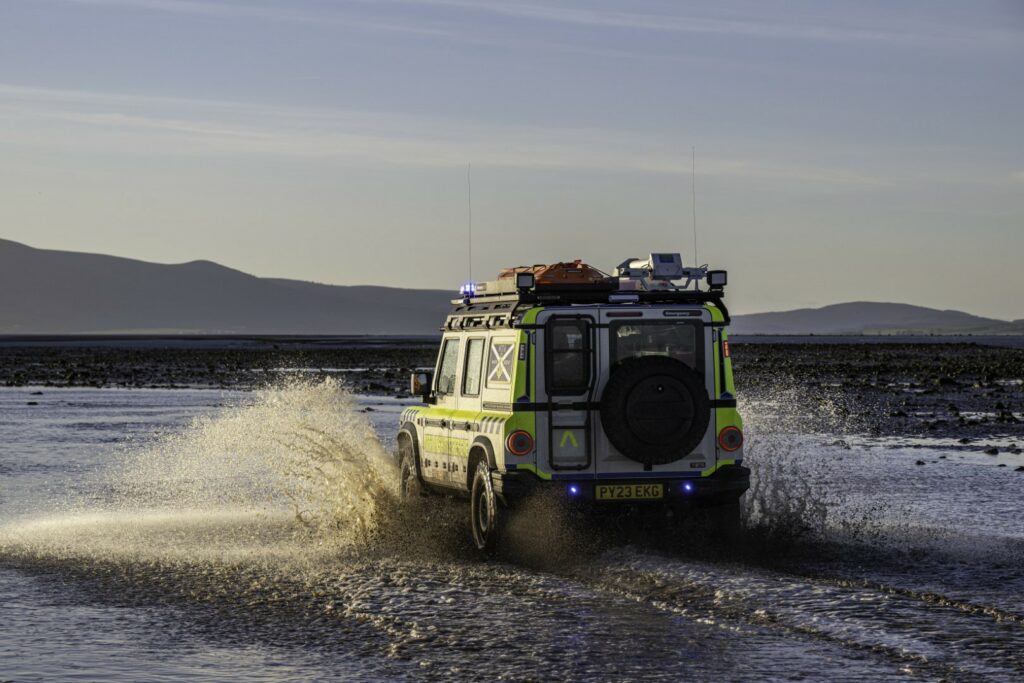
During its inception, the Grenadier was subjected to 1.1 million miles of testing and development by INEOS. When it came to this special example’s customisation, Nith Inshore Rescue took a similar, meticulous approach. To do so, the crew enlisted the services of Emergency One, a world-class manufacturer of emergency-service vehicles. “As with any first conversion, there are always challenges,” says company director Ali Bell when I ask him to share his thoughts on the two-year project. “There are no instructions to follow.”
Mechanically, the “bare minimum” was changed, he explains. “The Grenadier is a flexible platform. The main body of work carried out was equipment installation.” Digital diagrams of the Grenadier were drawn with help from a 3D scanner, which meant components could be measured and fitted to exacting standards. A light-bar and two high-power floodlights provide “optimal visibility in diverse environments”, and to accommodate equipment shelving “was strategically installed in the boot”. That’s where, I suspect, the crew members also stow their drinks and nibbles. “Aye, snacks in the back,” says Peter, who touts fruit juice, fizzy pop and chocolate for an effective on-the-go energy boost. “XL Cheese crisps are part of the staple diet here in the southwest of Scotland, so we have plenty of those, too. We’ll give you some to take away.” I’m happy to report, he is a man of his word.
During my time with Nith Inshore Rescue, I sense a unifying spirit in their service. “We’re one big, happy family,” confirms Stuart, who started volunteering at the age of 15. “Fuelling the boats, sweeping, that kind of thing,” he continues. “My two uncles are two of the longest-serving members, and I aim to try to beat them. One’s got 40 years: I’ve been here 13, so I’ve got a wee bit to go yet.” As rivalry goes, his objective is more than commendable.
Before parting ways, I’m granted permission to press THE button. Finally, (and yippee!). I’m also allowed to activate the siren and drive the Grenadier on a beach. What a treat! I do, however, have some feedback. There is a distinct lack of heated seats – which can be optioned – and if anyone deserves a warm bottom at the end of a long day, it’s the Nith Inshore Rescue volunteers.
If you would like to support the life-saving work of Nith Inshore Rescue, visit its JustGiving page https://www.justgiving.com/nithinshore-rescue or website www.nithrescue.org.uk
Find out more information on the INEOS Grenadier here.
